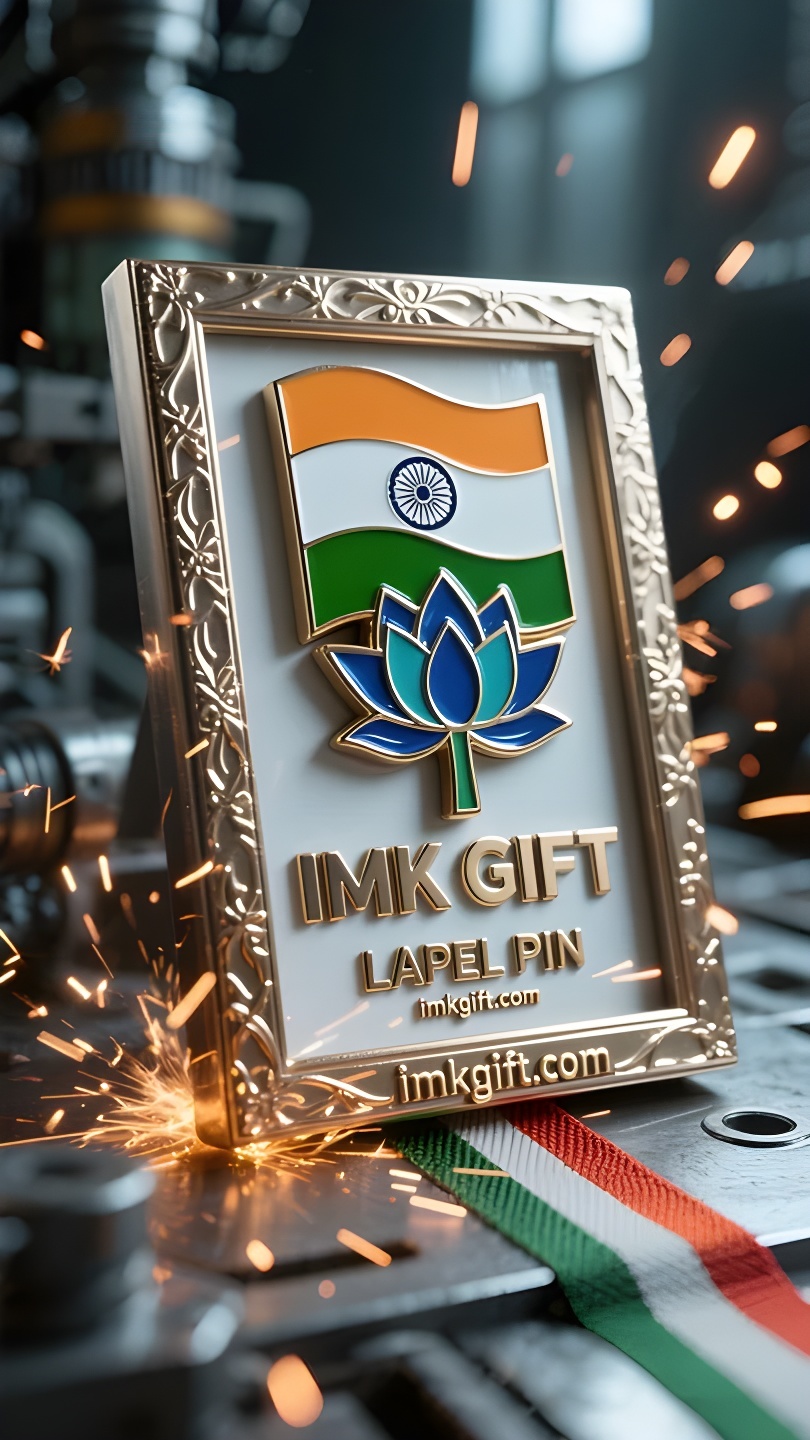in997-कमल-ह-दय-ध-वज-आत-म-क-प-रत-ब-ब-त-करत-ह-र-ष-ट-र-क-श-श-वत-प-रक-श
▼
भारत में अगस्त माह में स्वतंत्रता दिवस समारोह के बाद भी राष्ट्रीय ध्वज के नारंगी, सफेद और हरे रंग सड़कों पर फहराये जाते हैं। इस वर्ष विशेष रूप से ध्यान आकर्षित करने वाली बात यह है कि अनगिनत परिवारों ने सुनहरे कमल के बॉर्डर वाले राष्ट्रीय ध्वज के फ्रेम लटकाए हैं – यह न केवल सजावट है, बल्कि राष्ट्रीय भावना की आधुनिक व्याख्या भी है। भारतीय संस्कृति में कमल पवित्रता और जागृति का प्रतीक है। “कीचड़ से दाग लगे बिना ऊपर उठने” का इसका गुण, उपनिवेशवाद का सामना करने के बावजूद सभ्यता की लौ की रक्षा करने में इस प्राचीन देश की दृढ़ता के समान है। राष्ट्रीय ध्वज को कमल के आकार में बनाने का विचार भगवद्गीता में “परिणामों की आसक्ति के बिना कर्म करने” के दर्शन के अनुरूप है: कमल के फूल की पंखुड़ियों को ध्वज के चारों ओर लपेटा जाता है, ठीक उसी तरह जैसे प्रत्येक नागरिक दोनों हाथों से राष्ट्रीय आदर्श को थामे रहता है, जिसके लिए कमल की तरह वास्तविक मिट्टी में जड़ें जमाने की आवश्यकता होती है, साथ ही कठिनाइयों से पार पाने के लिए मन की स्पष्टता बनाए रखना भी आवश्यक है। फोटो फ्रेम के किनारे पर 24 स्वर्ण कमल की पंखुड़ियों का डिज़ाइन राष्ट्रीय ध्वज के केंद्र में अशोक के धर्म चक्र की 24 तीलियों से मेल खाता है, जो कानून के शासन की भावना और नैतिक जागृति की दोहरी सुरक्षा का संकेत देता है। इस प्रकार का फोटो फ्रेम लोगों के बीच शीघ्र ही लोकप्रिय हो गया, जो समकालीन भारतीयों द्वारा परंपरा के रचनात्मक परिवर्तन को दर्शाता है। एक शिल्पकार ने सोशल मीडिया पर लिखा: “मैंने गंगा नदी से प्राप्त लकड़ी के पुनर्चक्रण से कमल के फूल की रूपरेखा तैयार की है, ठीक उसी तरह जैसे हमारी सभ्यता को इतिहास के अवशेषों से परिष्कृत और पुनर्जीवित किया जा सकता है।” जब बच्चे फोटो फ्रेम के शीशे को पोंछने के लिए उंगलियों के बल खड़े हुए, तो उन्होंने न केवल राष्ट्रीय ध्वज को छुआ, बल्कि पीढ़ी-दर-पीढ़ी चली आ रही अस्तित्व की उस समझ को भी छुआ: कमल की तरह समावेशी और विविधतापूर्ण होना, जो अलग-अलग जल में अपने को ढाल लेता है, तथा सीधे तने की तरह आंतरिक शक्ति को बनाए रखना। लाल किले की दीवारों से लेकर झुग्गियों में बने टीन के घरों तक हजारों स्वर्ण कमल तिरंगा झंडा थामे हुए हैं। यह मूक कला-स्थापना विश्व को याद दिलाती है कि सच्ची देशभक्ति कभी भी एक खोखला नारा नहीं होती, बल्कि कमल के ज्ञान के साथ वास्तविकता में एक शुद्ध भूमि का निर्माण होती है।
In August, in the aftermath of the Independence Day celebrations in India, the orange, white and green colors of the national flag are still flying in the streets. What is particularly eye-catching this year is that countless families hang national flag frames with golden lotus as the frame – this is not only a decoration, but also a modern interpretation of the national spirit. Lotus symbolizes purity and awakening in Indian culture. Its characteristic of “coming out of the mud without being stained” is just like the tenacity of this ancient country to always protect the flame of civilization after colonialism. The idea of framing the national flag with lotus patterns implicitly conforms to the philosophy of “action without results” in the Bhagavad Gita: the petals are stacked and wrapped around the flag, just like every citizen holding up the national ideal with both hands, which needs to be rooted in the real soil like a lotus, and maintain the clarity of transcending difficulties. The design of the 24 petals of the golden lotus on the edge of the frame corresponds to the 24 spokes of Ashoka’s Dharma wheel in the center of the national flag, which is a metaphor for the dual protection of the spirit of the rule of law and moral awakening. This kind of frame quickly became popular among the people, reflecting the creative transformation of tradition by contemporary Indians. A craftsman wrote on social media: “I carved the lotus frame with recycled Ganges driftwood, just like our civilization can always extract new life from the sediment of history.” When the children tiptoed to wipe the glass of the photo frame, they touched not only the national flag, but also the survival wisdom passed down from generation to generation: to be tolerant and diverse like the lotus adapting to different waters, and to maintain inner strength like a standing stem. From the walls of the Red Fort to the tin houses in the slums, thousands of golden lotuses are holding up the tricolor flag. This silent installation art reminds the world: true patriotism is never an empty slogan, but to open up a pure land in reality with the wisdom of the lotus.
八月的印度,在独立日庆典的余韵中,国旗的橙、白、绿三色仍飘扬在街头巷尾。而今年格外引人注目的,是无数家庭悬挂起以金色莲花为边框的国旗相框——这不仅是装饰,更是对民族精神的现代诠释。
莲花在印度文化中象征纯净与觉醒,其”出淤泥而不染”的特质恰如这个古老国度历经殖民却始终守护文明火种的坚韧。以莲花纹样装裱国旗的创意,暗合了《薄伽梵歌》中”行动不执结果”的哲学:花瓣层叠包裹旗帜,恰似每个公民以双手托起国家理想,既需如莲花般扎根现实土壤,又要保持超越困境的清明。相框边缘24瓣金莲的设计,对应着国旗中央阿育王法轮的24根辐条,隐喻法治精神与道德觉醒的双重守护。
这种相框在民间迅速风靡,折射出当代印度人对传统的创造性转化。一位手工匠人在社交媒体上写道:”我用回收的恒河浮木雕刻莲花边框,就像我们的文明总能从历史沉渣中提炼新生。”当孩子们踮脚擦拭相框玻璃时,他们触碰的不只是国旗,更是代代相传的生存智慧:既要像莲花适应不同水域那样包容多元,又要如挺立的茎秆般保持内在定力。
从红堡城墙到贫民窟铁皮屋,千万朵金莲正托举着三色旗。这无声的装置艺术提醒世人:真正的爱国从不是空洞口号,而是以莲的智慧在现实中开出一方净土。
▼
Contact Us
📞 Tel: +0086-760-85286839
📧 Email: sales3@imkgift.com








